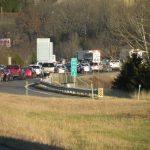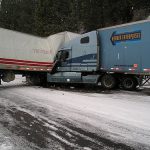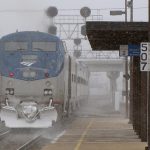NHTSA: drunk driving down; drugged driving on the rise
Drunk driving is on the decline, but that doesn’t necessarily mean traffic is safer: While drunk driving campaigns have been particularly effective in recent years, prescription drug and marijuana use is emerging more and more on our country’s roads, according to two new studies from the National Highway Traffic Safety Administration (NHTSA).

Prescription drugs and marijuana are replacing alcohol as a hazardous intoxicant drivers must contend with. Image from e-Magine Art.com.
First, the positive news: Drunk driving has dropped by nearly a third since 2007, and by over 75% since the NHTSA first conducted this survey (the Roadside Survey of Alcohol and Drug Use by Drivers) in 1973. Yet NHTSA also discovered a “large increase” in the number of drivers using marijuana or other illegal drugs.
“America made drunk driving a national issue and while there is no victory as long as a single American dies in an alcohol-related crash, a one-third reduction in alcohol use over just seven years shows how a focused effort and cooperation among the federal government, states and communities, law enforcement, safety advocates and industry can make an enormous difference,” NHTSA Administrator Mark Rosekind said in a statement. “At the same time, the latest Roadside Survey raises significant questions about drug use and highway safety. The rising prevalence of marijuana and other drugs is a challenge to everyone who is dedicated to saving lives and reducing crashes.”
The Roadside Survey is a voluntary and anonymous survey conducted in dozens of spots around the country; “drivers are notified that the survey is completely voluntary and that collected information is entirely anonymous.” According to the report, alcohol use is still on the decline, with around 8% of drivers during weekend night hours surveyed with alcohol in their system and just over 1% surveyed with 0.08 percent or higher breath alcohol content, the legal limit. But weekend night drivers with drugs in their system rose from 16.3% in 2007, to 20% in 2014. The figure for marijuana presence jumped by almost 50%.
NHTSA also conducted another study, the largest of its kind, to determine whether driver marijuana use is linked with a greater crash risk. It discovered that “[M]arijuana users are more likely to be involved in accidents, but that the increased risk may be due in part because marijuana users are more likely to be in groups at higher risk of crashes. In particular, marijuana users are more likely to be young men – a group already at high risk.”
As the “most precisely controlled” study of its type, this study measured the risk related to marijuana use at levels found among drivers in a large community in Virginia Beach, VA, where it collected data over 20 months from over 3,000 drivers involved in crashes. It compared these drivers to another group of 6,000 drivers who did not crash, discovering that who had been “drinking above the 0.08 percent legal limit had about four times the risk of crashing as sober drivers and those with blood alcohol levels at 0.15 percent or higher had 12 times the risk.”
“Drivers should never get behind the wheel impaired, and we know that marijuana impairs judgment, reaction times and awareness,” Jeff Michael, NHTSA’s associate administrator for research and program development said in a statement. “These findings highlight the importance of research to better understand how marijuana use affects drivers so states and communities can craft the best safety policies.”
NHTSA is also working on new studies on the risks of drugged driving, including the Washington State Roadside Survey, which will investigate related risks in a state that has legalized marijuana, as well as another study with the National Institute on Drug Abuse, which will analyze how drivers under the influence of drugs act while driving.
Related Posts
Category: Miscellaneous, Transportation

















